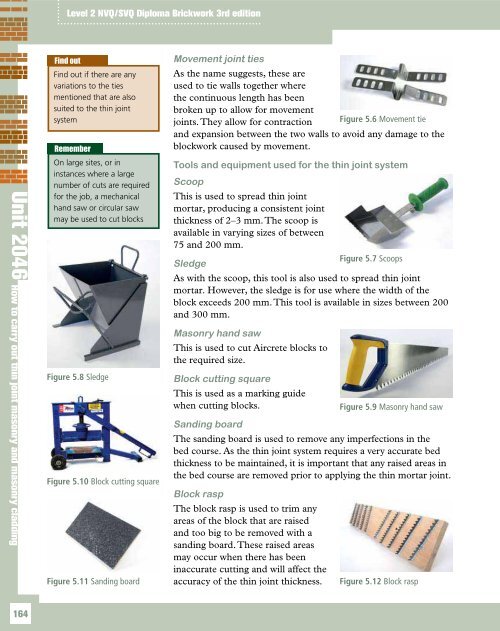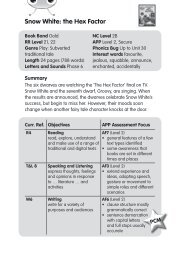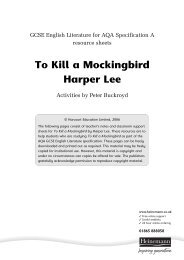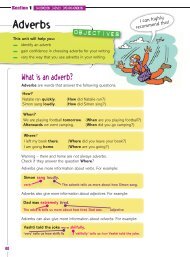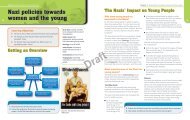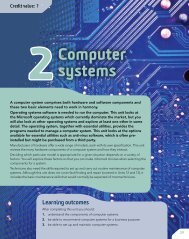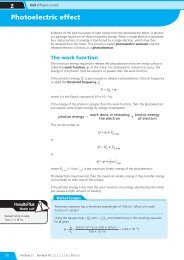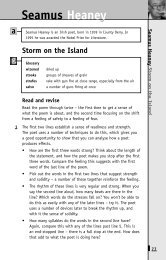Unit 2046 - Brickwork Level 2 CAA Diploma ... - Pearson Schools
Unit 2046 - Brickwork Level 2 CAA Diploma ... - Pearson Schools
Unit 2046 - Brickwork Level 2 CAA Diploma ... - Pearson Schools
You also want an ePaper? Increase the reach of your titles
YUMPU automatically turns print PDFs into web optimized ePapers that Google loves.
<strong>Unit</strong> <strong>2046</strong><br />
How to carry out thin joint masonry and masonry cladding<br />
164<br />
<strong>Level</strong> 2 NVQ/SVQ <strong>Diploma</strong> <strong>Brickwork</strong> 3rd edition<br />
Find out<br />
Find out if there are any<br />
variations to the ties<br />
mentioned that are also<br />
suited to the thin joint<br />
system<br />
Remember<br />
On large sites, or in<br />
instances where a large<br />
number of cuts are required<br />
for the job, a mechanical<br />
hand saw or circular saw<br />
may be used to cut blocks<br />
Figure 5.8 Sledge<br />
Movement joint ties<br />
As the name suggests, these are<br />
used to tie walls together where<br />
the continuous length has been<br />
broken up to allow for movement<br />
joints. They allow for contraction Figure 5.6 Movement tie<br />
and expansion between the two walls to avoid any damage to the<br />
blockwork caused by movement.<br />
Tools and equipment used for the thin joint system<br />
Scoop<br />
This is used to spread thin joint<br />
mortar, producing a consistent joint<br />
thickness of 2–3 mm. The scoop is<br />
available in varying sizes of between<br />
75 and 200 mm.<br />
Figure 5.7 Scoops<br />
Sledge<br />
As with the scoop, this tool is also used to spread thin joint<br />
mortar. However, the sledge is for use where the width of the<br />
block exceeds 200 mm. This tool is available in sizes between 200<br />
and 300 mm.<br />
Masonry hand saw<br />
This is used to cut Aircrete blocks to<br />
the required size.<br />
Block cutting square<br />
This is used as a marking guide<br />
when cutting blocks.<br />
Figure 5.9 Masonry hand saw<br />
Figure 5.10 Block cutting square<br />
Sanding board<br />
The sanding board is used to remove any imperfections in the<br />
bed course. As the thin joint system requires a very accurate bed<br />
thickness to be maintained, it is important that any raised areas in<br />
the bed course are removed prior to applying the thin mortar joint.<br />
Block rasp<br />
The block rasp is used to trim any<br />
areas of the block that are raised<br />
and too big to be removed with a<br />
sanding board. These raised areas<br />
may occur when there has been<br />
inaccurate cutting and will affect the<br />
Figure 5.11 Sanding board accuracy of the thin joint thickness. Figure 5.12 Block rasp


